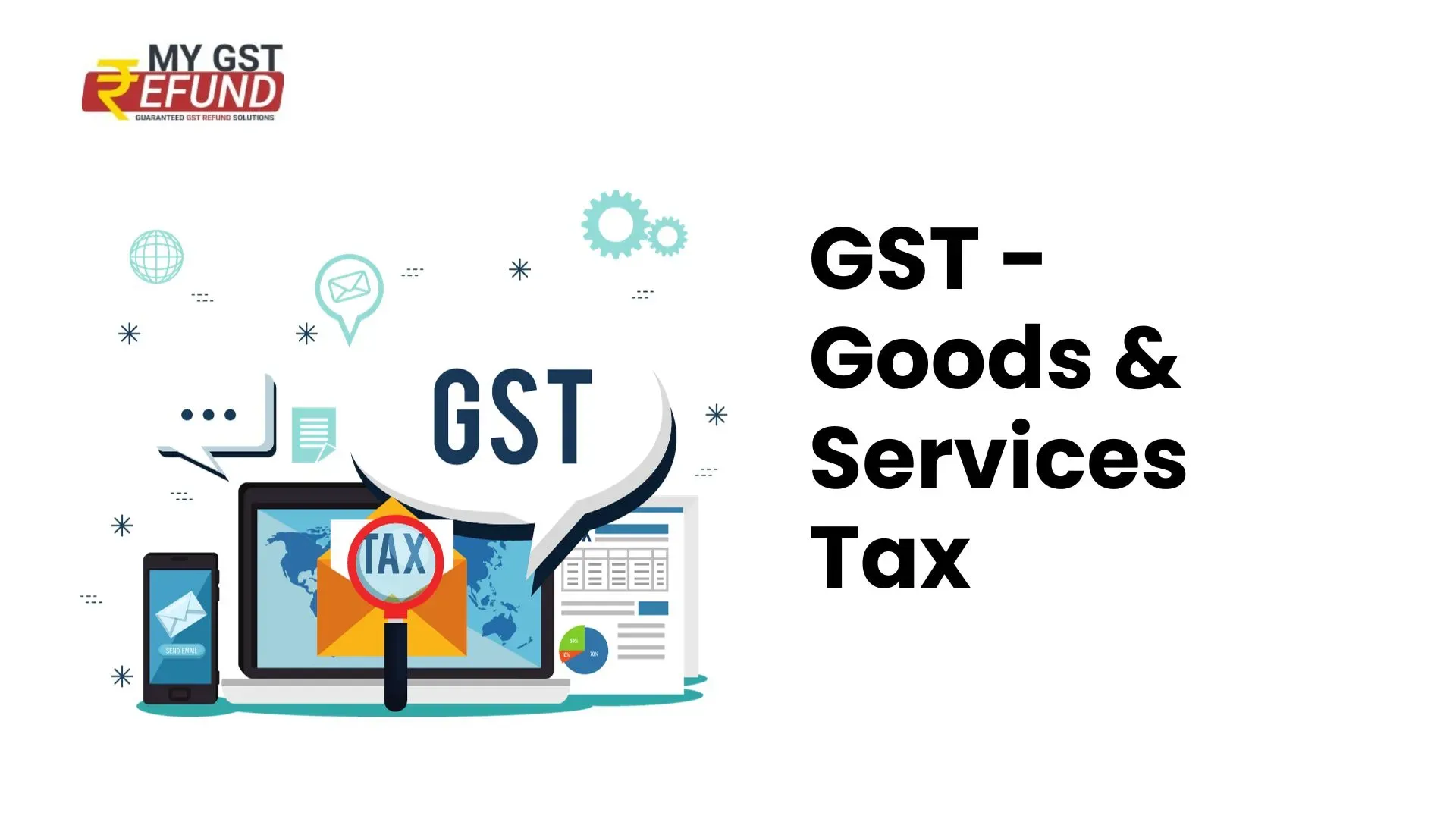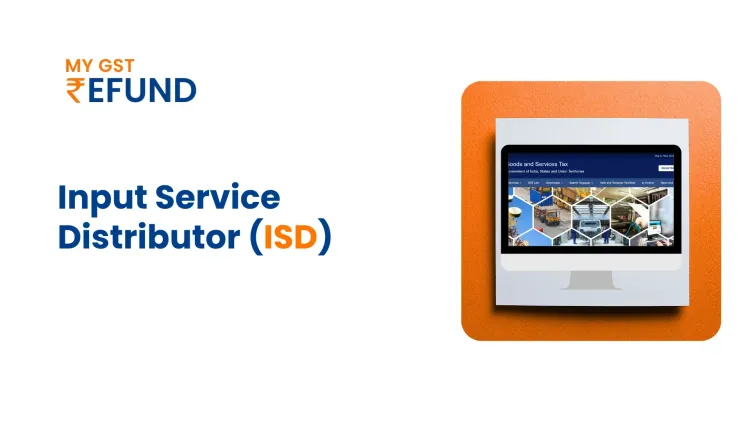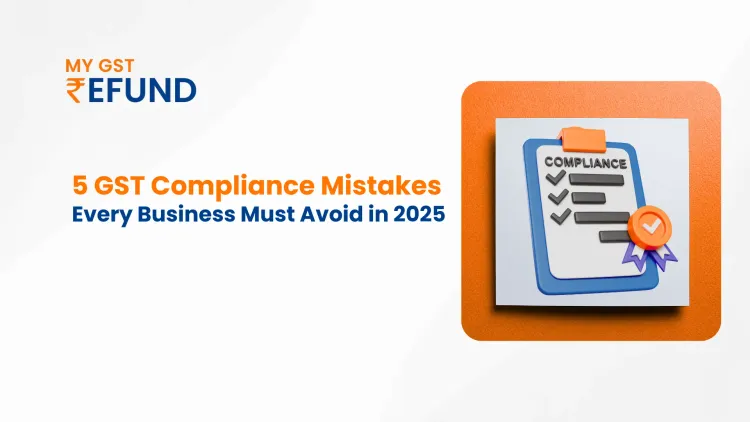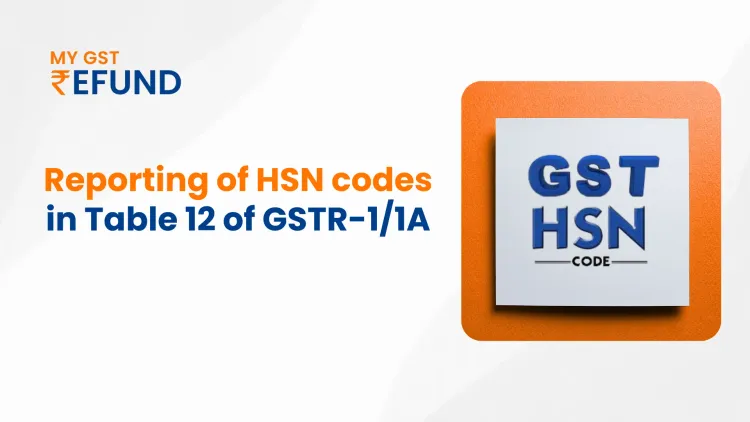GST - Goods and Services Tax
Published on: Wed Nov 08 2023
GST - Goods and Services Tax
A single tax, known as GST- Goods and Services Tax, is applied to the supply of goods and services from the producer to the customer. GST is a tax primarily on value addition at each level because credits of input taxes paid at each step will be available in the following stage of value addition.
Types of GST in India
India presently has four distinct kinds of GST. These include:
State Goods & Services Tax (SGST)Central goods & services tax (CGST)Integrated goods & services tax (IGST)Union territory goods & services tax (UTGST)
We will understand the types in detail: –
What is SGST?
All intrastate transactions of goods and services by the state government are subject to the SGST. The SGST has replaced before taxes such as VAT, entertainment, luxury, octroi, lottery, and purchase tax.
What is CGST?
The tax that the federal government collects, known as the central goods and services tax, or CGST, was merged with other taxes to create (CGST). For instance, historically applicable central indirect taxes like cess, surcharges, and excise taxes.
Example: –
For instance, Ramesh in Hyderabad purchased items worth Rs 20,000 from Ahmedabad vendor Rahul. The GST rate is 18%, which includes both the SGST and CGST at 9%.
Here, the dealer collects Rs. 3600, out of which Rs. 1800 will go to the central government and Rs. 1800 will go to the state government.
What is IGST?
Integrated Goods and Services Tax is referred to as IGST. One of the three parts of the goods and services tax is the IGST. IGST is imposed whenever goods and services are transferred between states.
IGST = CGST + SGST.
What is UGST?
The relevant Indian union territories impose UTGST. Any UGST-related transactions that the Union Territories carry out will be subject to their assessment. Chandigarh, Daman, Diu, Lakshadweep, Dadra and Nagar Haveli, and the Andaman and Nicobar Islands are among the Union Territories.
The SGST and UTGST tax rates are identical. The applicable UTGST rates are thus 0%, 5%, 12%, 18%, and 28%. Furthermore, the policies for exemptions for goods and services are similar to SGST.
History of GST – Goods and Service Tax
Goods and Services Tax (GST) is a comprehensive indirect tax system that was introduced in India on 1st July 2017, replacing multiple indirect taxes such as Value Added Tax (VAT), Central Excise Duty, Service Tax, and others. The introduction of GST in India was a significant tax reform and a major milestone in the country’s economic history.
The idea of introducing GST in India was first proposed by the Atal Bihari Vajpayee government in 2000. However, the bill could not be passed due to political opposition. The concept was reintroduced by the Manmohan Singh-led UPA government in 2006, and a GST bill was passed in Lok Sabha in 2011, but it could not be passed in the Rajya Sabha due to political opposition from some states.
In 2014, the newly elected government led by Prime Minister Narendra Modi made the passage of the GST bill a priority. After making several modifications, the GST bill was finally passed by both houses of parliament in 2016. The GST Council was then constituted in September 2016, which was responsible for making recommendations on the rates, exemptions, and thresholds under the GST regime
Tax Laws Before the Implementation of GST
Before the implementation of GST in India, the country had a complex system of indirect taxes, including central taxes and state taxes. Some of the major taxes were as follows:
Value Added Tax (VAT): VAT was a state-level tax that was levied on the sale of goods. It was introduced in India in 2005 and replaced the earlier sales tax system. The tax rate varied from state to state and from product to product.
Central Excise Duty: Excise duty was a tax levied by the central government on the manufacture of goods in India. It was imposed on the manufacturer, who then passed on the tax to the consumer.
Service Tax: Service tax was a tax levied on the provision of services in India. It was a central tax, and the tax rate was 15%.
Central Sales Tax (CST): CST was a tax levied by the central government on the sale of goods between two states. The tax rate was 2% for inter-state sales.
Customs Duty: Customs duty was a tax levied by the central government on the import and export of goods. The tax rate varied depending on the nature of the product.
Who should register for GST?
In India, any individual or entity engaged in the supply of goods or services with a turnover exceeding a specified threshold limit is required to register for Goods and Services Tax (GST). The threshold limit varies depending on the nature of the business and the state in which it is located.
Here are some of the categories of persons who are required to register for GST:
Businesses with an annual turnover of more than Rs. 40 lakhs: Any business or individual whose annual turnover of goods or services exceeds Rs. 40 lakhs (or Rs. 10 lakhs for businesses in north-eastern states) is required to register for GST.
Casual taxable persons: Individuals or businesses who occasionally supply goods or services, but whose turnover does not exceed the threshold limit, are also required to register for GST.
Non-resident taxable persons: Non-resident individuals or businesses that supply goods or services in India are required to register for GST, regardless of their turnover.
E-commerce operators: Online marketplaces that facilitate the supply of goods or services are required to register for GST, regardless of their turnover.
Input Service Distributors (ISDs): ISDs, who distribute the input tax credit among their branches or units, are required to register for GST.
Individuals who supply goods or services on behalf of others: Agents, brokers, or any other person who supplies goods or services on behalf of others are required to register for GST.
Businesses that are required to deduct tax at source (TDS): Any business or individual that is required to deduct tax at source (TDS) is required to register for GST.
Know the GSTIN- GST Identification Number
GSTIN stands for Goods and Services Tax Identification Number. It is a unique 15-digit identification number assigned to every registered taxpayer under the Goods and Services Tax (GST) regime in India.
The GSTIN is used to track transactions, payments, and tax compliance of registered taxpayers. It is based on the Permanent Account Number (PAN) issued by the Income Tax Department and is designed to be uniform across the country.
To verify your GST Number Online by visiting https://services.gst.gov.in/services/searchtp Enter the GSTIN mentioned on the invoice in the search box and followed by captcha, Final click “enter” to view the details.
How is the GST determined?
Usually, Taxpayers may choose among the main GST slabs: 0% (nil-rated), 5%, 12%, 18%, and 28%. A few GST rates, such as 3% and 0.25%, are less often applied.
GST is a destination-based tax, sometimes known as a consumption tax. As such, tax is imposed and paid to the state where goods and services are consumed. There are three tax levels under GST: IGST, CGST, and SGST. Each level’s tax is assessed depending on the supplier’s location and the location of the “place of supply,” as defined by the government. When a transaction is intra-state, CGST & SGST are imposed, whereas IGST is imposed when the transaction is inter-state.
Advantage of GST
The implementation of GST in India has brought about several advantages, such as the elimination of multiple indirect taxes, simplification of the tax system, reduction in tax evasion, and the widening of the tax base. However, there have also been challenges, such as the initial difficulties faced by businesses in adapting to the new tax system and the ongoing debate over the revenue-sharing mechanism between the central and state governments. Overall, the implementation of GST in India is considered a significant step towards creating a unified market in the country and improving the ease of doing business.
Objectives of GST – Goods and Service Tax
To fulfill the goal of “one country, one tax”: The advantage of a single tax is that it applies the same rate to a particular item or service in every state.To combine the bulk of India’s indirect taxes: – Previously, India levied a variety of indirect taxes at different points throughout the supply chain, including service tax, value-added tax (VAT), central excise, and others. Different forms of taxes were under the power of both the states and the central government. There was no centrally administered, unified tax that covered both commodities and services. GST was therefore put into place.To eliminate the cascading effect of taxes: One of the primary objectives of the GST was to do just that. Due to different indirect tax laws, taxpayers were previously unable to compare tax credits from one tax to another.To prevent tax avoidance, taxpayers under GST may only claim input tax credits on invoices that their respective suppliers have submitted. This reduces the likelihood that invoices may qualify for input tax credits.To make company operations easier by offering an online process, most GST procedures are completed online. Everything is done with the click of a mouse, including registration, return filing, refund requests, and the creation of e-way bills.
Why was GST required?
Multiple taxes on goods and services might lead to a costly, inefficient tax system susceptible to revenue leaks and tax evasion. In order to raise value at every stage and set off rates at both the state and federal levels, the Indian tax system requires the introduction of GST. Implementing GST will improve tax administration effectiveness, spur economic growth, and unite the whole nation on a single market.
If the Indian market has affordable prices, more and more foreign rivals would want to enter it, growing the market’s exports and benefits. In countries with opaque tax systems, demand for GST is still high even when the tax rate has not been established.
Features of GST – Goods and Service Tax
The salient features of GST are as under:
1. Unlike the current idea, when items are manufactured, sold, or provided as services, GST is payable on the “supply” of goods or services.
2. Unlike the current system of origin-based taxing, the GST is founded on destination-based consumption taxation.
3. It is a dual GST, with the Centre and the States levying tax on the same base simultaneously. The GST that the Center would levy would be known as Central GST (CGST), while the GST that the States would levy would be known as State GST (SGST).
4. Any interstate delivery of goods or services (including stock transfers) will be subject to an Integrated GST (IGST). This will be assessed and collected by the Government of India, and the Union and the States would split the tax according to any provisions made by law by Parliament after the GST Council’s advice.
5. In addition to the appropriate customs charges, imports of goods or services would be regarded as interstate supplies and subject to IGST.CGST, SGST, and IGST would be assessed at rates the Center, and the States would mutually agree upon. On the GST Council’s advice, the rates would be announced. The GST Council has agreed that GST will be assessed at four rates: 5%, 12%, 16%, and 28%. Each of these slabs has a schedule or list of things that would fall under it. Along with these rates, a cess would be levied on “demerit” items to provide money for compensating States that would lose income due to the adoption of the GST.
GST Rates
The GST rates are classified into five slabs, i.e., 0%, 5%, 12%, 18%, and 28%. Some goods and services are exempt from GST or are taxed at a lower rate of 0% or 5%, while others are taxed at higher rates of 12%, 18%, or 28%.
Name of Item
Applicable GST Rate
Mobile Phone - 12%
Sanitizer - 18%
Gold jewellery - 3%
Two wheeler - 28%
Car - 28%
GSTN- Goods and Services Tax Network
GSTN stands for Goods and Services Tax Network. It is a non-profit, non-government organization that manages the technology backbone for the Goods and Services Tax (GST) regime in India. GSTN was incorporated on March 28, 2013, as a private limited company under Section 25 of the Companies Act, 1956.
GST changes according to the union budget 2023-2024
Changes in GST rates: –
The Union Budget 2023 suggests changes to the GST- Goods and Services Tax rates for various goods and services. One of the proposals is to lower the GST rate for electric vehicles (EVs) from 5% to 3% to decrease the country’s dependence on fossil fuels. Additionally, the government has proposed an increase in the GST rate on tobacco products, such as cigarettes, from 28% to 35% in order to discourage tobacco use.
Simplification of GST compliance: –
The Union Budget 2023 has proposed measures to simplify GST compliance for taxpayers. One such proposal is to replace the current system of multiple returns with a single GST return, which will reduce the burden on taxpayers and streamline the GST recording process. In addition, the government has suggested the establishment of a faceless assessment and appeals system for GST- Goods and Services Tax, similar to the income tax system. This will enhance transparency and reduce the discretion of tax officials within the GST system.
Measures for curbing GST evasion: –
The Union Budget 2023 has suggested various measures to curb GST evasion. The government has proposed the implementation of an e-invoicing system for companies with a turnover exceeding Rs 50 crore. Under this system, all invoices will be electronically generated and reported to the GST Network (GSTN), minimizing the potential for GST evasion and human error. The government has also proposed connecting the RFID system with a new e-way bill system to track the movement of goods. This integration will decrease the occurrence of fake invoices and increase taxpayer compliance.
Changes in GST registration: –
The Union Budget 2023 has recommended changes to GST registration. The government has proposed a self-declaration-based instant GST registration system for new businesses, which will reduce the time and effort required to complete the GST registration process. This modification will ease the burden of GST registration compliance for new businesses. Additionally, the government has suggested an Aadhaar-based authentication system for GST registration to enhance the authenticity of registrations.
Introduction of GST audit: –
The Union Budget 2023 recommends the introduction of a GST audit for taxpayers with a turnover exceeding Rs 10 crore. The audit will be conducted by an independent auditor and will cover all areas of GST compliance, including returns, invoices, and input tax credits. The purpose of the audit is to decrease the likelihood of GST evasion and improve taxpayer compliance.
ITC on CSR: –
Corporate social responsibility (CSR) aims to ensure that businesses are responsible for their impact on society, the economy, and the environment. CSR is a vital element of the business ecosystem. The Union Budget 2023 has suggested changes to the taxation of CSR activities, including the eligibility of Input Tax Credit (ITC) for CSR expenses. This article will discuss the ITC on CSR in India’s new Union Budget 2023.
ITC for CSR expenses: –
The Union Budget 2023 proposes that businesses be allowed to claim Input Tax Credit (ITC) for their CSR expenses. This means that businesses can claim credit for the GST they pay on goods and services used for CSR activities. This change is expected to help businesses reduce their overall tax liability and encourage them to invest more in CSR initiatives. However, it is important to note that ITC for CSR expenses will only be allowed if the CSR activity is in line with the company’s primary business activity. As a result, businesses cannot claim ITC for expenses that are unrelated to their core business activity. For example, a pharmaceutical company cannot claim ITC for donations made to educational institutions because they are not related to the company’s core business.
Impact of ITC on CSR expenses: –
It is expected that allowing Input Tax Credit (ITC) for CSR expenses will positively impact companies’ overall spending on CSR activities. By allowing businesses to claim a credit on the GST paid on goods and services used for CSR activities, it is likely that they will be encouraged to invest more in such initiatives. Furthermore, since companies will need to maintain accurate records of their CSR expenses to claim ITC, this change is expected to enhance the efficiency and transparency of CSR spending.
OIDAR and a non-taxable online recipient: –
The Union Budget 2023 proposes changes to the terms “Non-taxable online recipient” and “OIDAR.” The modification involves amending section 2(16) of the IGST Act to make OIDAR services provided to an unregistered person located in the taxable territory by anyone in a non-taxable territory taxable. The earlier condition that OIDAR services were only taxable if they were not used for commercial, industrial, or any other business or professional purposes is being removed.
Consent-based sharing of information: –
According to the proposed changes in the Union Budget 2023, taxpayer information may be shared with other systems if the supplier and recipient give their consent. This will facilitate the sharing of information during various processes such as registration, GSTR-1/GSTR 3B returns, annual returns, and preparation of e-invoices and e-way bills. However, in cases where the recipient’s identity needs to be disclosed, their consent will also be required to share the details of e-invoices and e-way bills.
Transaction in schedule III: – included in exempt supply: –
Those transactions that are not categorized as either a supply of goods or a supply of services are referred to as Schedule III transactions. Under the GST system, these transactions are not considered taxable. Examples of transactions in Schedule III include:
services that an employee provides to the employer while working for them.sale of land or a structure (other than one that is being built) or both etc.
The Union Budget 2023 proposes to include transactions from Schedule III in the exempt supply, which means that these transactions will not be subject to GST-Goods and Services Tax and will be treated as exempt supplies. This is expected to simplify the compliance process for taxpayers, as Schedule III transactions are already considered non-taxable. Additionally, this move is expected to reduce the tax burden on citizens who engage in Schedule III transactions. The inclusion of these transactions in the exempt supply is also anticipated to improve the efficiency and transparency of the GST regime since all taxpayers will be treated equally. Overall, this change is expected to benefit taxpayers by reducing their tax burden and improving the GST system’s effectiveness.
Related Posts





